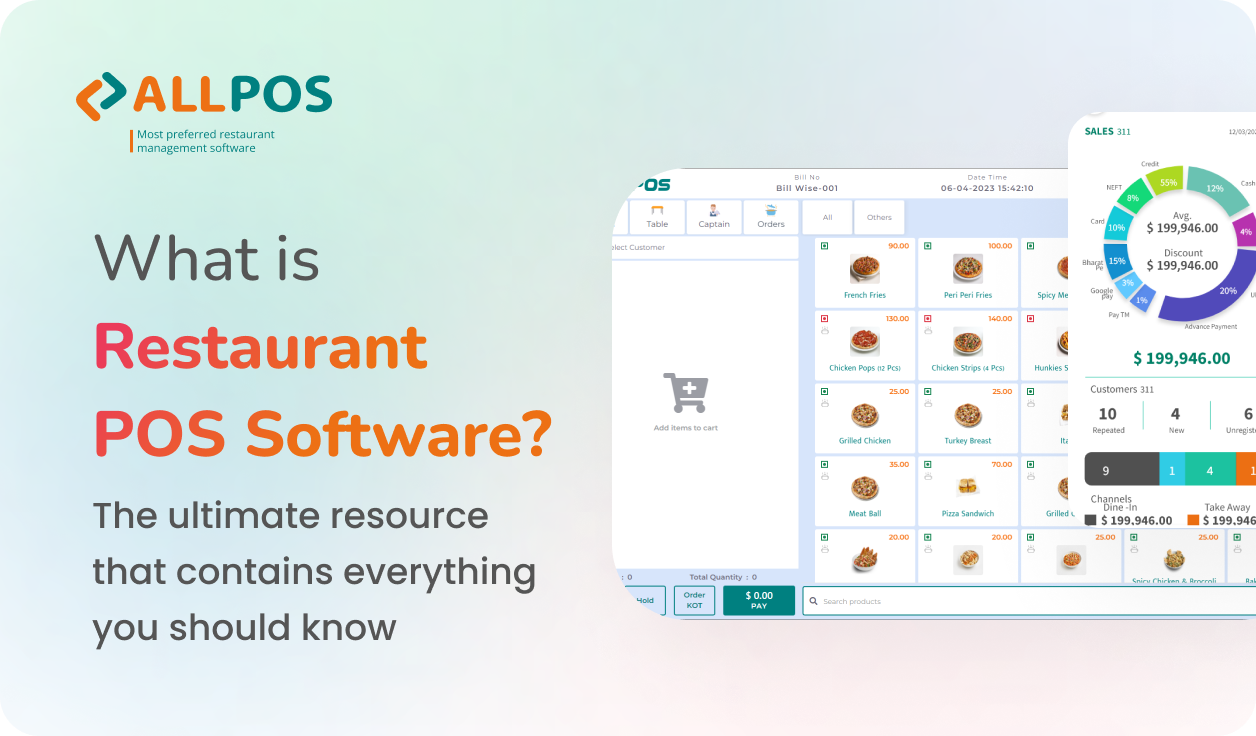Enhancing Efficiency and growth: The Power of Restaurant POS Software

In the dynamic world of restaurants, managing operations seamlessly and delivering exceptional customer experiences is crucial for success. To achieve this, modern eateries are turning to advanced technology solutions, such as restaurant POS Software . In this blog post, we will explore what a restaurant POS software is, why restaurants need POS software, and the numerous benefits of using cloud-based restaurant POS software.
What is a restaurant POS Software?
A restaurant POS software refers to the combination of hardware and software designed to streamline and automate various operations in a food service establishment. It serves as a central hub where orders are placed, payments are processed, and data is collected and analyzed. A powerful POS system typically consists of touchscreen devices, receipt printers, cash drawers, and integrated software tailored to meet the specific needs of the restaurant industry.
Why restaurant need a POS Software?
Streamlined Order Management:
With a restaurant POS system, staff can efficiently take and modify orders, which are directly transmitted to the kitchen or bar for preparation. This eliminates the need for manual order taking and minimizes errors, resulting in improved efficiency and faster service.
Enhanced Inventory Management:
POS software enables real-time tracking of ingredient usage and inventory levels. By automating inventory management, restaurants can optimize their stock levels, prevent wastage, and streamline the ordering process, ultimately reducing costs and improving profitability.
Simplified Billing and Payment Processing:
A reliable POS system simplifies the billing process by automatically calculating the total bill, including taxes and gratuity. It enables multiple payment options, including credit and debit cards, mobile wallets, and even contactless payments, offering convenience to customers and reducing the risk of human errors during payment processing.
Benefits of using Cloud-based restaurant POS software:
Accessibility and Scalability:
Cloud-based POS software provides the flexibility of accessing the system from anywhere, allowing owners and managers to monitor operations and make data-driven decisions even when they are away from the restaurant. Additionally, cloud-based systems can easily scale as the business grows, accommodating additional locations and expanding functionalities.
Data Security and Backup:
Storing data in the cloud ensures data security and reduces the risk of loss or damage due to hardware failures or accidents. Regular backups and robust security measures implemented by reputable restaurant POS software providers, such as ALLPOS, safeguard sensitive customer information, ensuring peace of mind for restaurant owners.
Real-time Reporting and Analytics:
Cloud-based POS systems offer powerful reporting and analytics features that provide insights into sales, inventory, customer preferences, and more. These real-time reports help in making informed business decisions, optimizing menu offerings, and improving overall operational efficiency.
With ALLPOS, restaurant owners can manage orders, payments, inventory, and customer data seamlessly, while also benefiting from real-time reporting and analytics. Their solution is designed to enhance operational efficiency, boost profitability, and deliver exceptional customer experiences.
Conclusion
In today's competitive restaurant industry, leveraging advanced technology solutions like restaurant POS Software has become essential for success. The benefits of using cloud-based POS software, such as enhanced accessibility, scalability, data security, and real-time analytics, are key factors in improving overall operational efficiency and profitability.
ALLPOS stands out as a reliable partner in providing cutting-edge POS solutions tailored to the unique needs of the foodservice industry, helping restaurants streamline their operations, maximize profits, and exceed customer expectations.